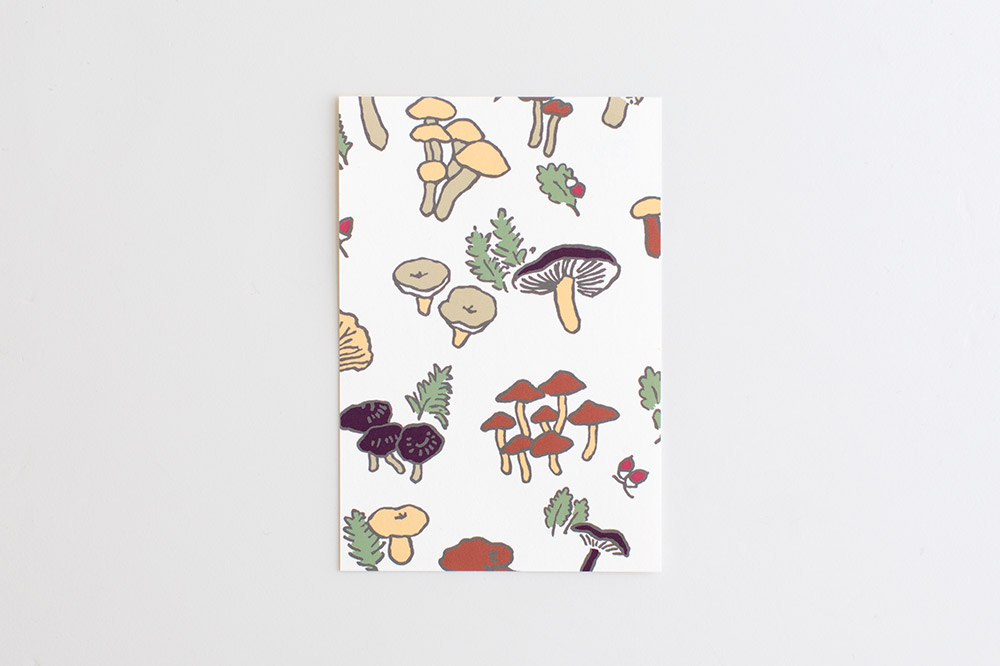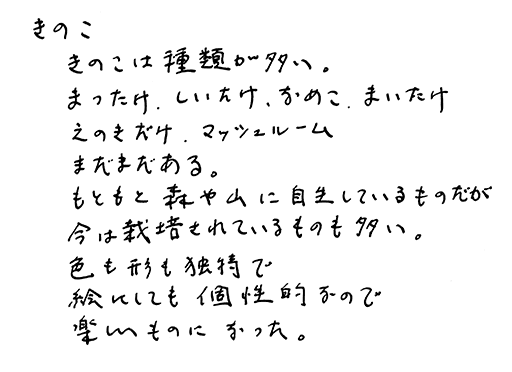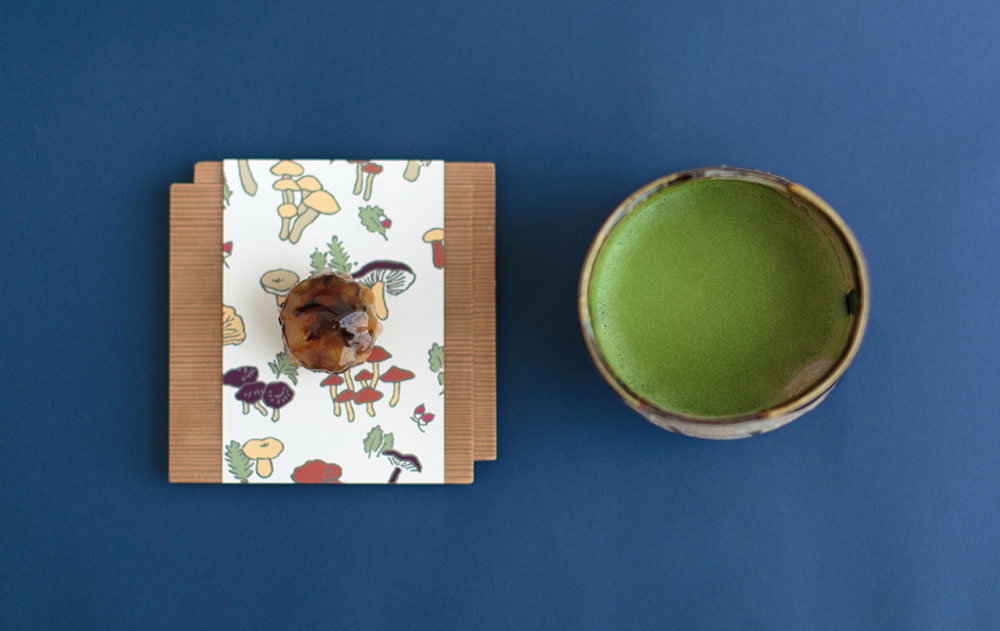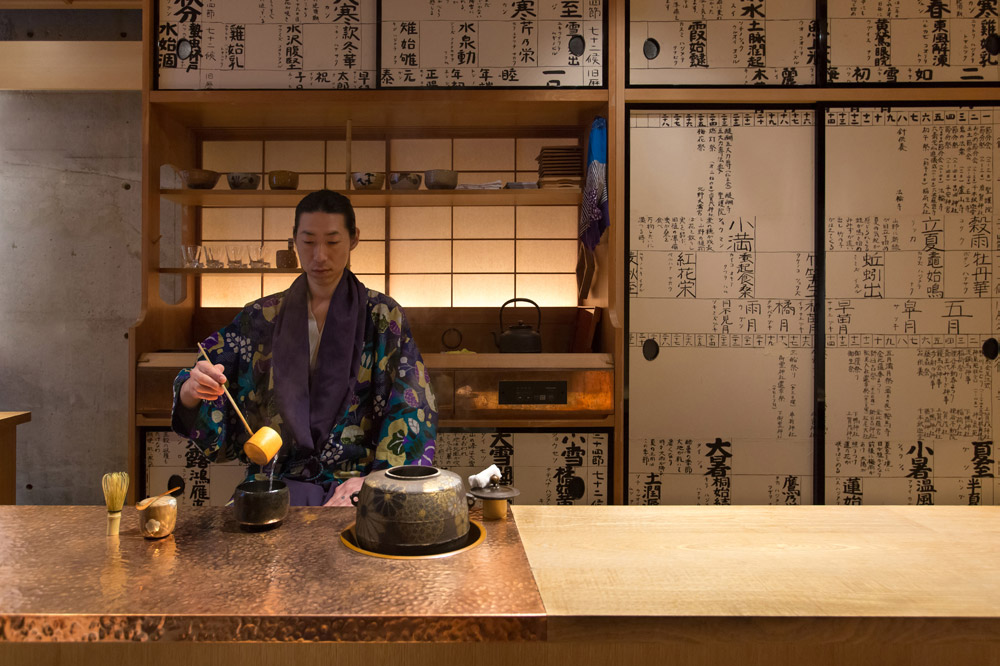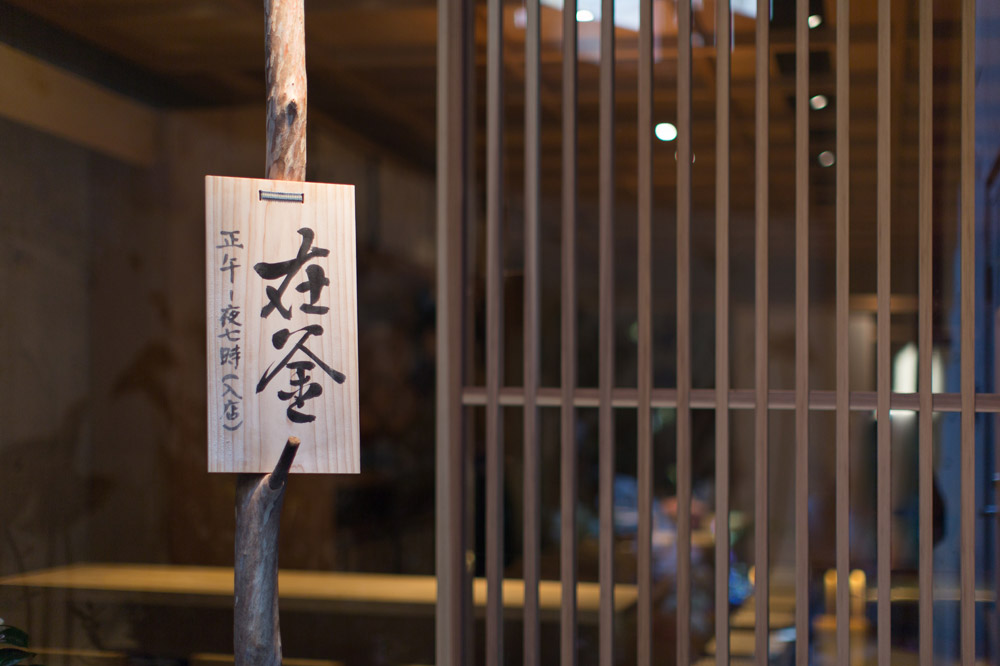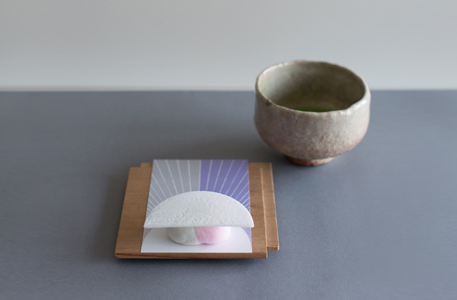霜月のテキスタイルデザインは、きのこ。図案にも描かれている4種のきのこ(しめじ、なめこ、えりんぎ、しいたけ)を使った、ちょっと変わり種な和菓子を作りました。
白餡をクルミ入りの道明寺で包み、その上から蜜漬けして軽く乾燥させたきのこをまぶしています。
仕上げにかけているみたらしだれ(昆布だし、醤油、水飴、吉野葛)は、口当たりが良いように少し温めています。
November's textile design is about mushrooms. We made up a novel wagashi, a traditional Japanese confectionary, using four different kinds of mushrooms: simeji, nameko, eringi, and shiitake. Sweetened white bean paste is wrapped with doumyouji, a kind of rice cake (mochi) mixed with walnuts. Mushrooms on top were soaked in syrup and semi-dried. As a finishing touch we put mitarashi-dare over it, which is a sweet soy glaze made of soy sauce, a kelp, syrup and kudzu vine from Yoshino. The sauce is heated up a little to produce a smooth taste and texture.



